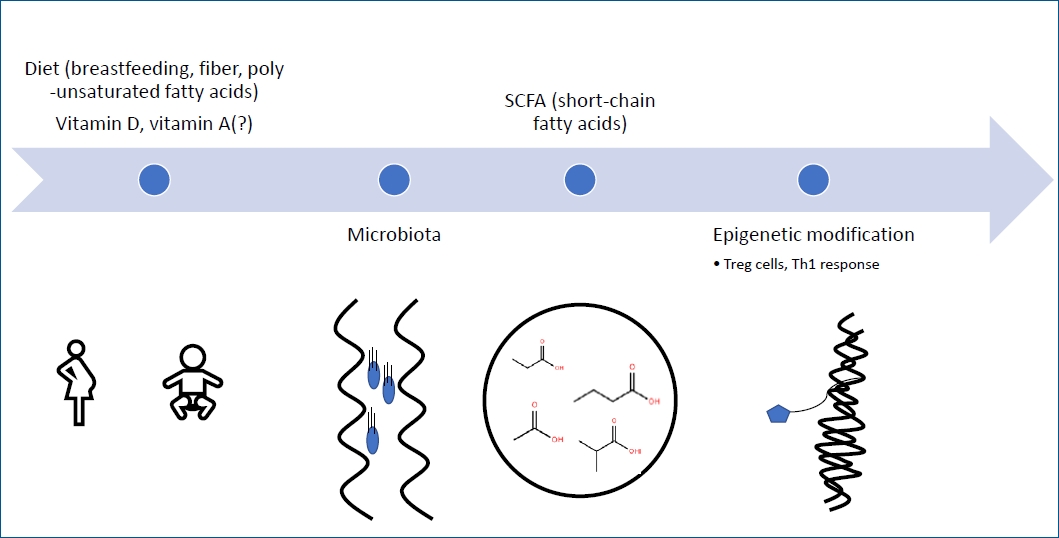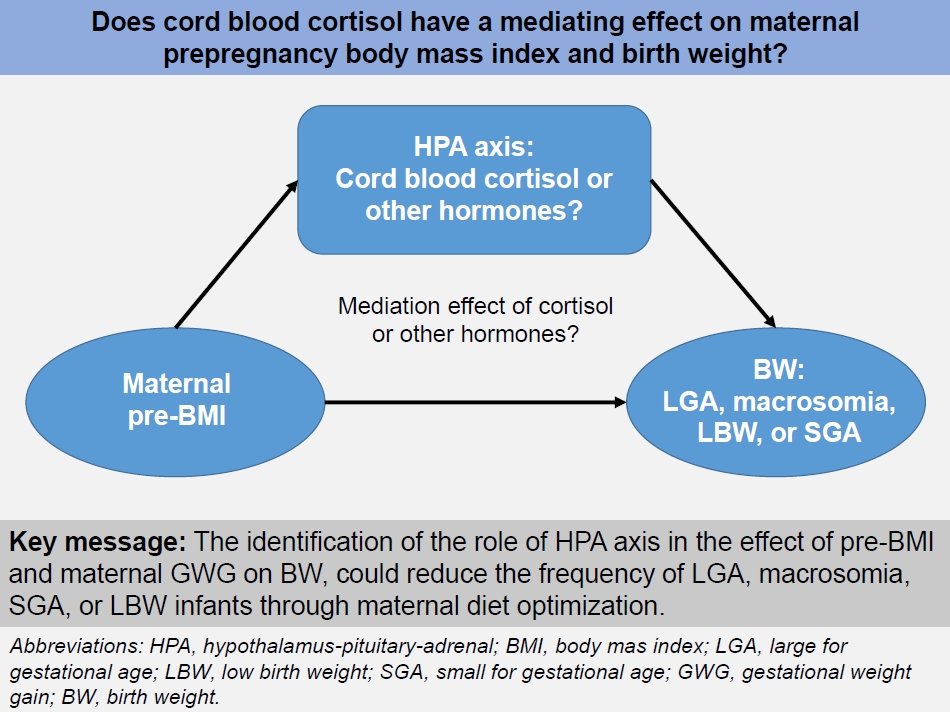Most viewed
- Page Path
-
- HOME
- BROWSE ARTICLES
- Most viewed
"Most viewed" Articles are from the articles published in 2023 during the last six month.
- Editorial
- Infection
- COVID-19 infection and vaccination among children
(2,288 times)
-
Amnuay Kleebayoon, Viroj Wiwanitkit
-
Clin Exp Pediatr. 2023;66(12):531-532. Published online August 30, 2023
-
|
|
· Coronavirus disease 2019 (OVID-19) infection and immunization have been linked with kidney problems; however, causality has not been proven.
· Concern about confounders is usually needed.
· Correspondence about a published article on the COVID-19 vaccine |
-
-
- Editorial
- Emergency Medicine
- Current diagnosis and image-guided reduction for intussusception in children: teamwork approach
(2,254 times)
-
Ji-Hyun Seo
-
Clin Exp Pediatr. 2023;66(2):66-67. Published online September 1, 2022
-
|
|
· The successful and safe enema reduction of intussusception depends primarily on the experience and preference of the radiologists and the availability of resources.
· The establishment of a standardized manual or protocol for reduction and pre-reduction treatment of intussusception, along with the collaboration of pediatricians, radiologists, and surgeons, is expected to improve the treatment success rate. |
-
-
- Gastroenterology
- Is there a link between social media usage and functional gastrointestinal disorders in children?
(2,148 times)
-
Hae Jeong Lee
-
Clin Exp Pediatr. 2023;66(4):169-170. Published online March 23, 2023
-
|
|
Social media use has potential benefits and risks, including links to adverse health problems in children such as functional gastrointestinal disorders (FGIDs). Screen time control, emotional support, and parental guidance can help children navigate social media safely and reduce the risk of developing FGIDs. |
-
-
- Original Article
- Infection
- Role of miRNA-146a and miRNA-125b in Helicobacter pylori
(2,078 times)
-
Nashwa Farouk Mohamed, Ola G.A. Behairy, Manal S. EL-Defrawy, Mona Mahmoud Elsayed, Naglaa F. Alhusseini
-
Clin Exp Pediatr. 2025;68(10):781-789. Published online April 1, 2025
-

|
Question: Why is the early detection of Helicobacter pylori-associated gastritis in children important?
Finding: The early detection of H. pylori-related gastritis is crucial for its effective management, especially in pediatric patients with dyspepsia.
Meaning: The use of miRNA signatures could detect early gastritis, enabling timely H. pylori eradication treatment to mitigate growth delays and cancer risk. |
-
-
- Editorial
- Other
- Advancing pediatric health: the multifaceted scope of Clinical and Experimental Pediatrics
(2,055 times)
-
Jin Hee Oh, Man Yong Han
-
Clin Exp Pediatr. 2023;66(4):171-172. Published online March 29, 2023
-
|
|
Clinical and Experimental Pediatrics (CEP) is a journal that specializes in pediatric research topics. It covers a wide range of research areas, including basic research, translational research, and research related to improving pediatric health and diseases. CEP also focuses on the coordination of societal structures and processes that orchestrate pediatric health and disease throughout society, and the parallel relationship between regional characteristics and globalization. The journal intends to continue promoting pediatric health through relentless efforts and the discovery of new research areas. |
-
-
- Gastroenterology
- Recent advances in epigenetic mechanisms, diagnosis, and treatment of pediatric gastrointestinal allergic disorders
(1,852 times)
-
Eell Ryoo
-
Clin Exp Pediatr. 2023;66(6):250-251. Published online May 19, 2023
-

|
· Epigenetic mechanisms are involved in rapidly increasing food allergy.
· There is still no definitive way to diagnose food allergy.
· Early introduction of peanuts, eggs, and cow’s milk reduces food allergy incidence.
· Administration of probiotics such as Lactobacillus rhamnosus GG, Bifidobacterium bifidum can partially reduce the occurrence of allergic symptoms. |
-
-
- Editorial
- Neonatology (Perinatology)
- Does cord blood cortisol have a mediating effect on maternal prepregnancy body mass index and birth weight?
(1,625 times)
-
Gyu Hong Shim
-
Clin Exp Pediatr. 2023;66(1):24-25. Published online November 30, 2022
-

|
· A high prepregnancy body mass index (pre-BMI) is associated with large for gestational age (LGA) and macrosomia, whereas a low pre-BMI is associated with small for gestational age (SGA) and low birth weight (LBW).
· The identification of the role of the hypothalamus-pituitary-adrenal axis in the effect of pre-BMI and maternal gestational weight gain on birth weight could reduce the frequency of LGA, macrosomia, SGA, or LBW through maternal diet optimization. |
-
-
- Review Article
- General Pediatrics
- Impact of screen exposure during pediatric ages including multifaceted aggravating factors: a literature review
(1,140 times)
-
Daniel González-Pérez, David Sebastián Huertas-Moreno, Manuela Granados-Pinilla, Sofía Hernandez-Rojas, Laura González-Rincon, Geraldine Hurtado-Garcia, Simón Grisales-Calle, María José González-Mariño, Luz Dary Gutierrez-Castañeda, Jhon Camacho-Cruz
-
Clin Exp Pediatr. 2025;68(10):751-760. Published online September 24, 2025
-

|
Excessive screen time in children is linked to obesity, overweight, sedentary behavior, depression and mood disorders, myopia, behavioral changes, sleep disturbances, attention deficit hyperactivity disorder, among others. Polymorphisms in genes like FTO, CACNA1D, and DRD2 could further increase these risks. Implementing strategies such as limiting screen use, creating screen-free zones, and monitoring content is essential to mitigate adverse physical and mental health effects in the pediatric population. |
-
-
- Perspective
- General Pediatrics
- Parenting principles to combat attention-deficit/hyperactivity disorder and form resilient young minds
(692 times)
-
Jandy Le, Sandhya J. Kadam
-
Clin Exp Pediatr. 2025;68(10):838-841. Published online September 22, 2025
-

|
The prevalence of attention-deficit/hyperactivity disorder, conduct disorder, and other related behavioral problems is increasing among children, likely due to less interaction with their parents and the real world and more time spent on screens, on social media, and in the virtual world. This article highlights several simple, basic parenting principles to facilitate the growth of healthy, resilient minds and combat the symptoms of opposition, hyperactivity, and distractibility. |
-
-
- Editorial
- Basic Research
- Stem cell mining: urine cells to biobanking
(667 times)
-
Yong Joo Ahn
-
Clin Exp Pediatr. 2025;68(10):761-762. Published online September 24, 2025
-

|
· A safe and accessible source of somatic cell generating induced pluripotent stem cells (iPSCs) in pediatric neurogenic disorders
· A noninvasive and simple method for isolating urine cells, which can effectively reprogram into pluripotent stem cells using episomal vectors
· Establishing a urine-derived iPSC bank as a reliable and scalable resource for disease modeling, therapeutic testing, and personalized medicine in pediatric neurogenic disorders. |
-
-



















